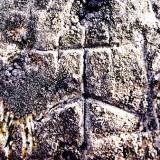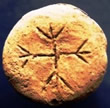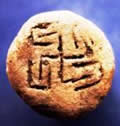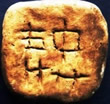Rock Art in Macedonia
  Macedonian rock art is characterised by abundance, diversity, and perfection of form. Rock art is found all over Macedonia, although only 70 percent of the territory has been explored until now, resulting in the discovery of over 600,000 rock carvings. Macedonia's entire territory is an open-air museum, containing most of the rock carvings that have been discovered and preserved. The Mt. Osogovo region in the northeast is the number one example and foundation of the overall cultural heritage. Macedonian rock art is characterised by abundance, diversity, and perfection of form. Rock art is found all over Macedonia, although only 70 percent of the territory has been explored until now, resulting in the discovery of over 600,000 rock carvings. Macedonia's entire territory is an open-air museum, containing most of the rock carvings that have been discovered and preserved. The Mt. Osogovo region in the northeast is the number one example and foundation of the overall cultural heritage.
A legend from this region says:
While watching the stars, the prehistoric man imagined each of them to represent the soul of every man born on earth, whereas the falling stars were believed to extinguish upon somebody’s death, making holes on the earth. This is what prompted them to carve such hollows, later connecting them with small canals. Connecting the cupolas with the canals signified a link with their dead kindred’s souls.
  The number of discovered solar symbols is considerable, which indicates that Macedonia is a cradle of the sun cult -- hence the symbolic connection between the centre of the sun and the centre of the earth in the carvings found at the site of Gjavolska Crkva in Rugjince village and in the Kumanovo village of Mlado Nagoricane. An impressive complex of so-called arc forms can be seen in the area of Pisan Kamen in Zeleznica village near Kratovo, the world's richest source of these forms. The number of discovered solar symbols is considerable, which indicates that Macedonia is a cradle of the sun cult -- hence the symbolic connection between the centre of the sun and the centre of the earth in the carvings found at the site of Gjavolska Crkva in Rugjince village and in the Kumanovo village of Mlado Nagoricane. An impressive complex of so-called arc forms can be seen in the area of Pisan Kamen in Zeleznica village near Kratovo, the world's richest source of these forms.
Carvings of every known style and age, form and size are found in Macedonia, where most significant rock art sites are: Opila, Trnovec, Dolno Jabolciste, Desovo, and Crn Kamen.
According to the stylistic and thematic content of the carvings, Macedonian rock art covers several periods: 1. Schematic period (5300-3400 BC); 2. Symbolic period (3400-1800 BC); 3. Geometric period (1800-200 AD); 4. Period of Christianization.
Clay Tablets in Kratovo-Sveti Nikole Region
  Valuable Neolithic clay objects, seals, medallions, and inscribed tablets have been found in the Kratovo-Sveti Nikole region. The tablets are carved with signs that are already known in the constellation of rock carvings discovered in Macedonia. They are of enormous significance to Macedonian literacy, confirming Macedonia's status of a genuine cradle of the world's culture and literacy. Valuable Neolithic clay objects, seals, medallions, and inscribed tablets have been found in the Kratovo-Sveti Nikole region. The tablets are carved with signs that are already known in the constellation of rock carvings discovered in Macedonia. They are of enormous significance to Macedonian literacy, confirming Macedonia's status of a genuine cradle of the world's culture and literacy.
This revelation bears witness to the continuity of literacy in Macedonia over a period of dozens of millenniums. The messages on the clay   plates are similar to those carved in the rocks and the stones that have been discovered in various parts of the country. The swastika prevails as a dominant element on the clay stamps. Some of the signs that are featured on the medallions correspond with medieval Macedonian letters. This is the first discovery of old inscriptions on clay objects in Macedonia, similar to the famous Mesopotamian tablets. plates are similar to those carved in the rocks and the stones that have been discovered in various parts of the country. The swastika prevails as a dominant element on the clay stamps. Some of the signs that are featured on the medallions correspond with medieval Macedonian letters. This is the first discovery of old inscriptions on clay objects in Macedonia, similar to the famous Mesopotamian tablets.
Macedonian Rock Art Centre
A Macedonian-Italian research expedition discovered an engraved sun symbol resembling the Macedonian flag in the Kratovo village of Trnovec on 14 September 1994. This symbol is universal and highly evocative.
At an IFRAO (International Federation of Rock Art Organisations) congress held in Italy in 1995, Dusko Aleksovski, the author of a monograph entitled “Rock Art -- World Art Foundation,” was listed among the world's 2,000 most important individuals of the 20th century.
  A rock art reservation opened on a hill at the site of Orlov Kamen in the Kratovo village of Trnovec on 7 October 1998. This site is the home to the first rock that proved the assumption of the presence of rock art in Macedonia. It stretches over an area of 1,200 m2, from the Kriva Reka River's flow into the Pcinja River to the Bulgarian border. Here virtually every stone was an object of the prehistoric man’s spiritual expression. A rock art reservation opened on a hill at the site of Orlov Kamen in the Kratovo village of Trnovec on 7 October 1998. This site is the home to the first rock that proved the assumption of the presence of rock art in Macedonia. It stretches over an area of 1,200 m2, from the Kriva Reka River's flow into the Pcinja River to the Bulgarian border. Here virtually every stone was an object of the prehistoric man’s spiritual expression.
Skopje hosted a world rock art congress on 14-21 July 2002. On 21 July 2002, a decision was made to found the World Rock Art Academy, the only research institution of its kind, headquartered in Skopje.
The first permanent rock art exhibition -- and for now the only one in the Balkans -- opened in Kratovo on 24 February 2006. The Macedonian centre intends to open regional rock art centres in Bitola, Prilep, Gostivar, Tetovo, Veles, Ohrid, Stip, Kocani, Delcevo, Gevgelija, Kavadarci, Vinica, Berovo, Radovis, and Kriva Palanka.
Contact us for further information or if you wish to visit any of Macedonia's rock art sites.
|